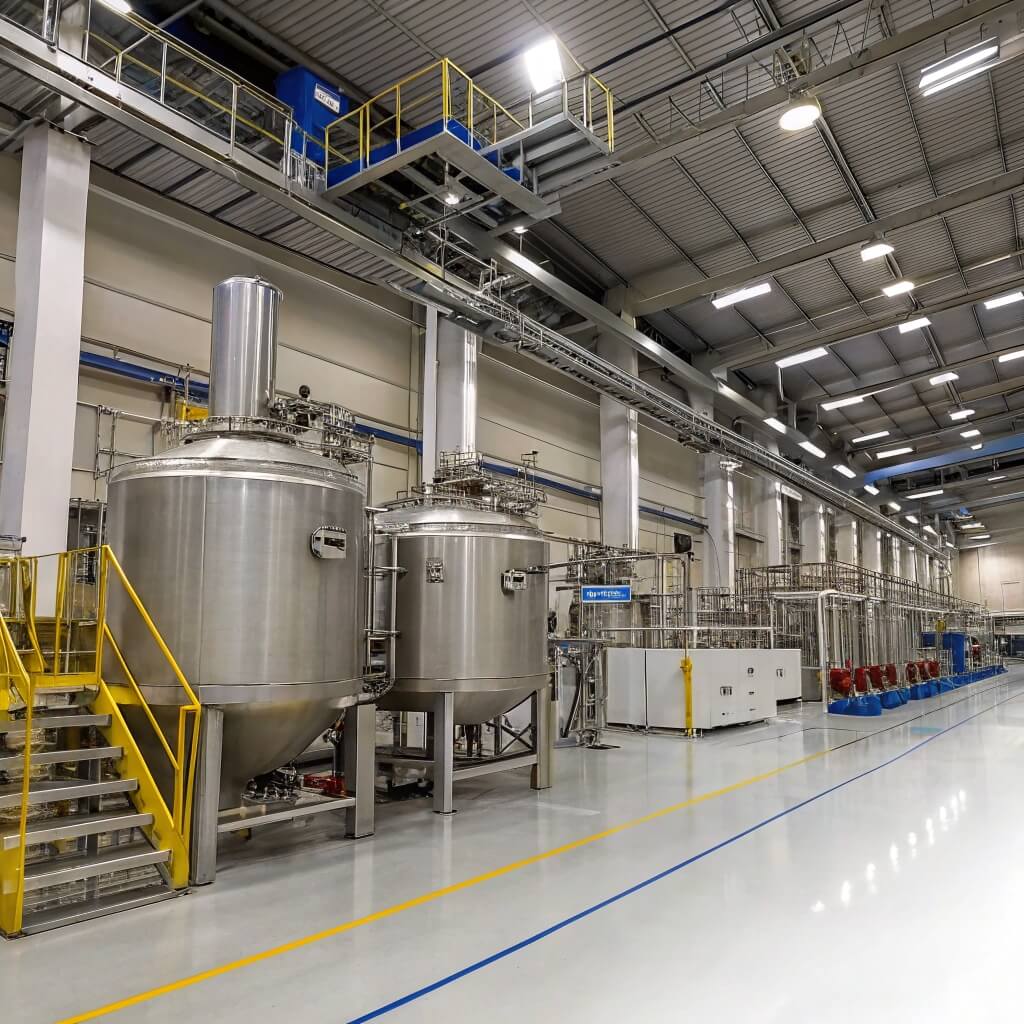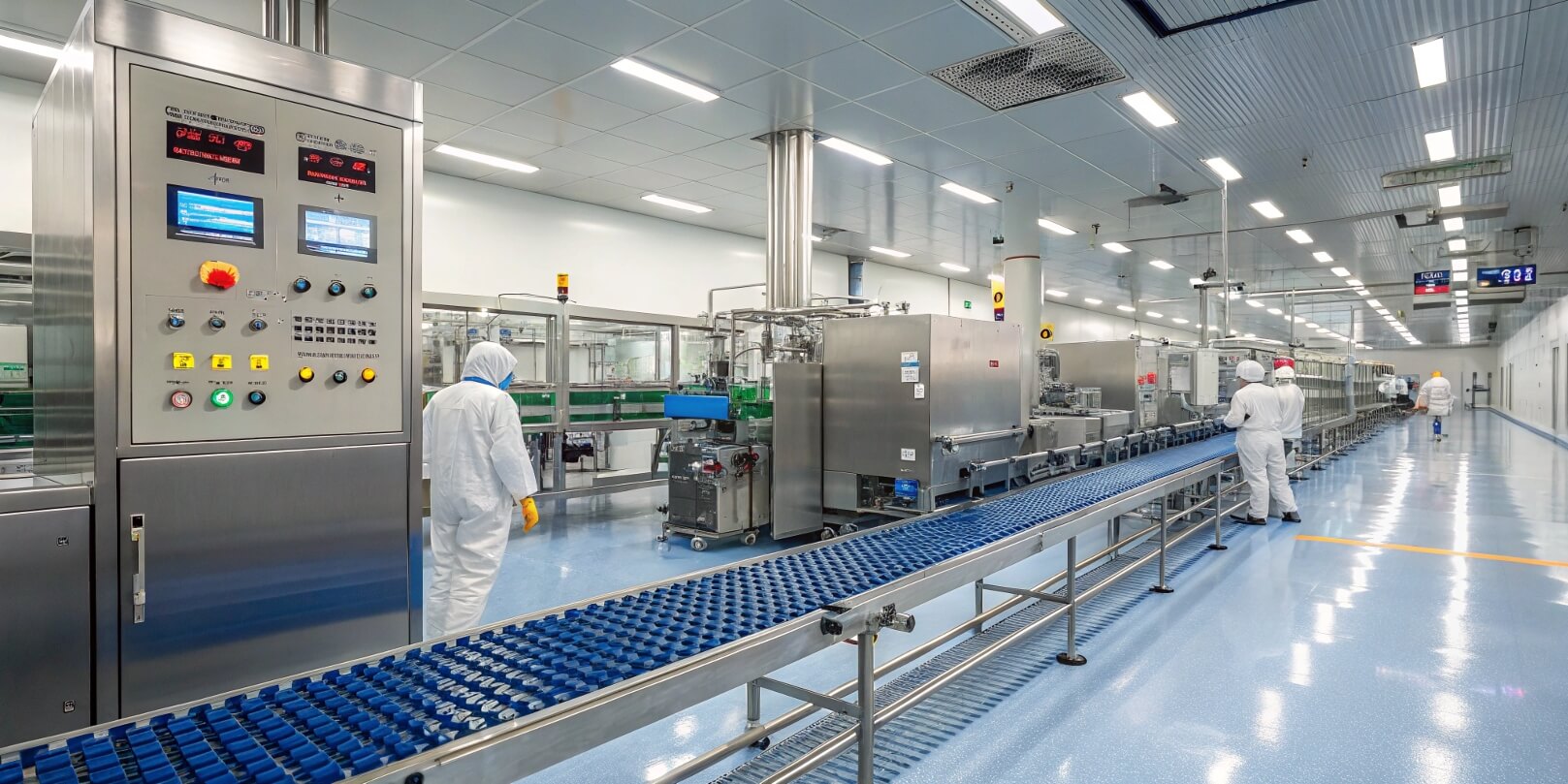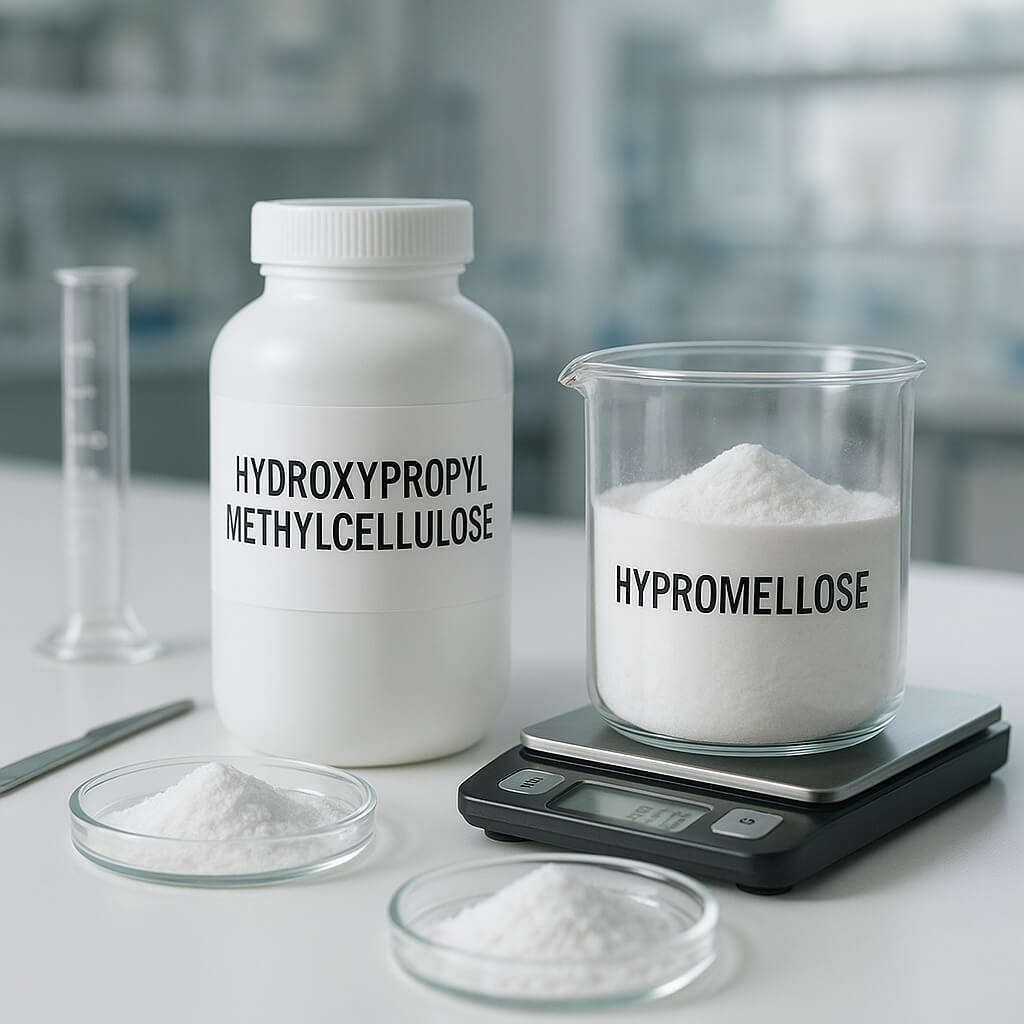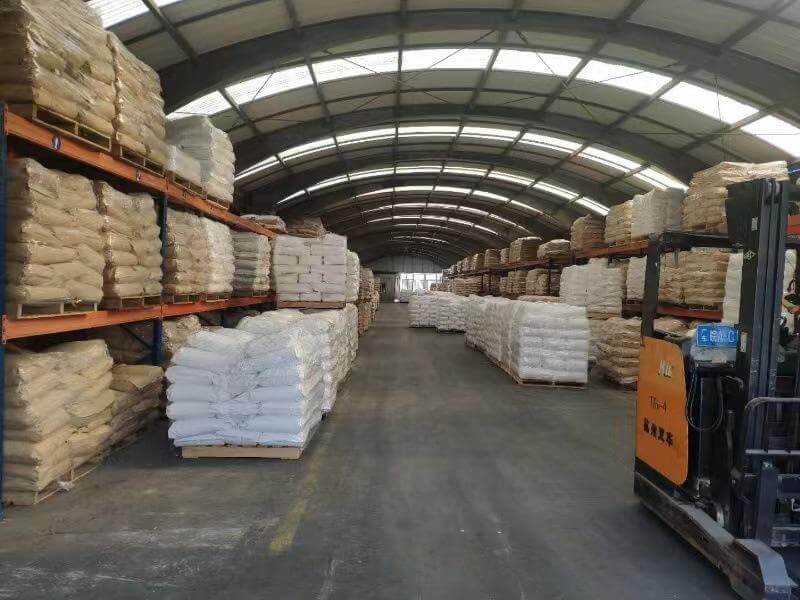Nei settori in cui precisione e prestazioni sono fondamentali, selezionare i materiali giusti non è solo un compito, ma una decisione strategica. Idrossipropilmetilcellulosa (HPMC) si distingue come un componente versatile e indispensabile, che migliora tutto, dalle formulazioni del cemento alle applicazioni farmaceutiche. Il suo ruolo di ingrediente chiave richiede non solo qualità ma anche coerenza.
Tuttavia, la sfida sta nel trovare un produttore di HPMC che mantenga le promesse. In un mercato pieno di qualità scadente, spedizioni in ritardo e fornitori non certificati, la scelta sbagliata può interrompere le operazioni e danneggiare la reputazione. Quindi, come puoi identificare un partner veramente affidabile?
Questa guida fornisce spunti pratici per orientarsi nel mercato HPMC, aiutandoti a individuare i segnali d'allarme, identificare le qualità imprescindibili e implementare strategie di sourcing efficaci. Pronti a prendere decisioni informate e ad assicurarvi un partner che alimenti il vostro successo? Immergiamoci.

1. Comprendere l'HPMC: perché è essenziale?
Che cos'è l'idrossipropilmetilcellulosa?
L'idrossipropilmetilcellulosa (HPMC) è un etere di cellulosa modificato, rinomato per la sua multifunzionalità. Derivato da fibre vegetali naturali, l'HPMC è trattato chimicamente per ottenere una migliore solubilità, stabilità e prestazioni in diverse applicazioni. Le sue proprietà uniche, come la ritenzione idrica, la formazione di pellicola e il controllo della viscosità, lo rendono indispensabile in vari settori. Che si tratti di consentire l'applicazione uniforme di materiali da costruzione, garantire una somministrazione precisa di farmaci nei prodotti farmaceutici o migliorare la consistenza dei prodotti alimentari, l'HPMC si distingue come un ingrediente versatile che offre consistenza ed efficienza. Ma cosa rende queste applicazioni davvero rivoluzionarie? Approfondiamo i suoi diversi utilizzi.
Diverse applicazioni dell'HPMC
HPMC per l'edilizia: Miglioramenti di cemento e malta
Nel settore edile, l'HPMC trasforma le prestazioni del cemento e della malta asciutta. Migliorando la ritenzione idrica, previene le crepe e migliora la lavorabilità delle miscele. Ciò non solo garantisce un tempo di presa più lungo per le applicazioni, ma porta anche a una finitura impeccabile, rendendolo un additivo di riferimento per i professionisti. Ma non è tutto: in quale altro modo l'HPMC eleva gli standard edilizi? Diamo un'occhiata più da vicino.
Ruolo COME Eccipienti farmaceutici e additivi alimentari
L'HPMC di grado farmaceutico eccelle come legante e agente a rilascio controllato nelle formulazioni di compresse, offrendo consistenza e sicurezza. Nella produzione alimentare, la sua capacità di stabilizzare, addensare ed emulsionare aumenta la qualità di prodotti come salse, prodotti da forno e alternative ai latticini. Sia nelle applicazioni di grado industriale che in quelle di grado alimentare, la versatilità dell'HPMC consolida la sua reputazione di materiale essenziale in tutti i settori. Quindi, come si traduce questa versatilità in vantaggi misurabili? Continua a leggere per scoprire l'impatto.
2. Il panorama globale dei produttori di HPMC
Principali centri di produzione
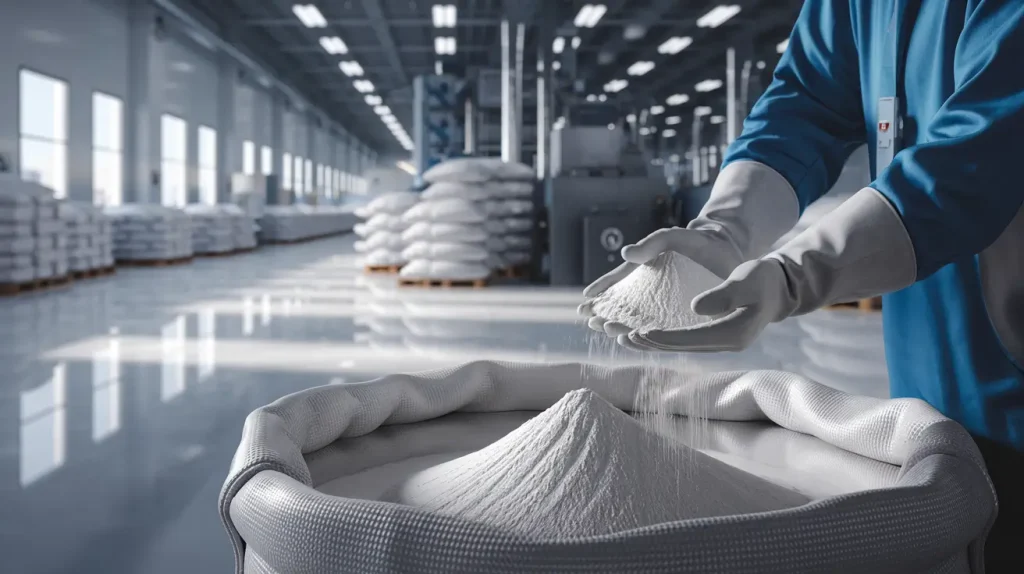
La produzione di idrossipropilmetilcellulosa (HPMC) è concentrata in hub globali chiave, ognuno dei quali svolge un ruolo fondamentale nel soddisfare la domanda in crescita. La Cina guida la carica, offrendo una vasta offerta di opzioni convenienti grazie alle sue avanzate capacità di produzione e alle economie di scala. L'India segue da vicino con una crescente attenzione all'HPMC di alta qualità e di grado farmaceutico, mentre l'Europa è celebrata per i suoi rigorosi standard di qualità e le tecniche di produzione innovative. Queste regioni non solo dominano il mercato, ma danno anche il tono a tendenze emergenti come la produzione sostenibile e la personalizzazione avanzata dei prodotti, assicurando che l'HPMC soddisfi le mutevoli esigenze del settore. Ma quali sfide e opportunità modellano questo panorama competitivo? Esaminiamo le dinamiche della supply chain.
Tendenze nei prezzi dell'HPMC e nella catena di fornitura
Il panorama dei prezzi di HPMC ha subito cambiamenti significativi nell'ultimo decennio. Mentre i costi delle materie prime e i progressi tecnologici hanno mantenuto la produzione competitiva, fattori come tensioni geopolitiche, interruzioni della catena di fornitura e un controllo normativo più rigoroso hanno occasionalmente causato fluttuazioni dei prezzi. L'aumento dei processi di produzione eco-compatibili e la diversificazione della produzione regionale stanno influenzando ulteriormente i costi, rendendo fondamentale per gli acquirenti rimanere informati. Quindi, come possono le aziende districarsi in queste complessità per garantire una fornitura affidabile e un'efficienza dei costi? Le risposte sono più avanti.
3. Qualità fondamentali di un produttore HPMC affidabile
Qualità e conformità del prodotto
Il fondamento di un produttore di HPMC affidabile risiede nel suo impegno per la qualità e nel rispetto degli standard globali. I produttori affidabili aderiscono a certificazioni come USP (Farmacopea Statunitense), EP (Farmacopea Europea) e ISO, garantendo che i loro prodotti soddisfino rigorosi standard di sicurezza e prestazioni. Valutare il contenuto di metalli pesanti, i gradi di viscosità e la consistenza granulometrica di un fornitore è essenziale, poiché questi fattori influiscono direttamente sull'efficacia dell'HPMC in diverse applicazioni. Che si producano prodotti farmaceutici, alimentari o materiali da costruzione, la precisione in questi ambiti è imprescindibile. Ma come si può valutare se un fornitore mantiene davvero queste promesse? Approfondiamo le sue capacità tecniche.
Capacità tecniche
Un produttore HPMC affidabile non si limita a produrre; innova. I principali fornitori sfruttano strutture di ricerca e sviluppo (R\&S) avanzate e tecnologie di produzione all'avanguardia per rimanere all'avanguardia. La loro capacità di personalizzare i livelli di sostituzione dei gruppi metossilici e idrossipropilici consente prestazioni su misura in termini di viscosità, ritenzione idrica e formazione di film. Questa adattabilità garantisce che i loro prodotti si allineino perfettamente alle esigenze uniche di ogni settore. Ma le certificazioni sono altrettanto fondamentali per valutare la loro affidabilità: cosa dovresti cercare? Esploriamo.
Certificazioni e Verifiche
Le certificazioni sono il segno distintivo di fiducia nel panorama manifatturiero. Cercate fornitori con credenziali verificabili come GMP (Good Manufacturing Practices) e HACCP (Hazard Analysis and Critical Control Points). Queste certificazioni dimostrano l'impegno di un produttore nei confronti della garanzia della qualità, della sicurezza e delle pratiche di produzione etiche, offrendovi fiducia nella loro affidabilità e competenza. Ma le certificazioni da sole non bastano: come potete garantire che siano in linea con i vostri obiettivi aziendali? Continuate a leggere per scoprirlo.
4. Passaggi per verificare i potenziali fornitori di HPMC
Condurre una ricerca approfondita
Il percorso per trovare un fornitore HPMC affidabile inizia con una ricerca meticolosa. Le directory online e le piattaforme commerciali come Alibaba e Global Sources forniscono un punto di partenza, mostrando un'ampia gamma di produttori. Tuttavia, la vera intuizione spesso risiede nei forum di settore e nelle raccomandazioni dei colleghi, dove professionisti esperti condividono conoscenze di prima mano su fornitori affidabili e potenziali insidie. Sfruttando queste risorse, puoi creare una rosa di fornitori degni di considerazione. Ma come si passa da un elenco a una valutazione praticabile? Il passaggio successivo è fondamentale.
Richiedi campioni e risultati dei test
Una volta identificati i potenziali fornitori, il passo successivo è valutare la qualità dei loro prodotti attraverso prove tangibili. Richiedete campioni per valutare quanto soddisfino i requisiti specifici del vostro settore, come viscosità, purezza e funzionalità. Per garantire imparzialità e accuratezza, insistete affinché i campioni vengano testati da terze parti. Questo passaggio fondamentale non solo verifica la qualità del prodotto, ma fornisce anche una comprensione più approfondita dell'impegno del fornitore in termini di trasparenza e affidabilità. Ma cosa fare dopo per garantire la migliore partnership? Esploriamo ulteriori strategie.
5. Valutazione dei processi e della tecnologia di produzione
Cosa distingue un produttore?
Nel panorama competitivo della produzione di HPMC, non tutti i produttori sono uguali. I leader del settore si distinguono per la padronanza dei processi di produzione di cellulosa modificata, che richiedono precisione e tecnologia avanzata. Questi produttori combinano innovazione e sostenibilità, impiegando metodi ecocompatibili che riducono gli sprechi e il consumo di energia. Per le aziende che danno priorità all'approvvigionamento etico e all'impatto ambientale, collaborare con un fornitore impegnato in pratiche ecologiche non è solo una preferenza, è una necessità. Ma come puoi valutare se un fornitore mantiene davvero queste promesse? Approfondiamo la coerenza dei lotti.
Comprensione della coerenza dei batch
La coerenza nella produzione è il segno distintivo di un produttore di HPMC di alto calibro. Sia per applicazioni di livello industriale che per applicazioni alimentari, l'uniformità tra lotti garantisce prestazioni prevedibili, riducendo i rischi nella qualità del prodotto finale. Che si tratti di mantenere lo stesso livello di viscosità nei materiali da costruzione o di garantire identici standard di purezza nelle formulazioni farmaceutiche, una coerenza affidabile dei lotti riflette la dedizione di un produttore all'eccellenza e all'attenzione ai dettagli. Ma come si convalida questa coerenza prima di impegnarsi con un fornitore? La risposta sta in rigorosi test e audit.
6. Gestione della logistica e degli accordi di fornitura
Termini di negoziazione
Garantire accordi di logistica e fornitura favorevoli è tanto importante quanto scegliere il produttore HPMC giusto. Negoziare termini quali opzioni di pagamento e garanzie commerciali può mitigare i rischi finanziari assicurando al contempo transazioni più fluide. Le quantità minime d'ordine flessibili (MOQ) sono un altro fattore chiave, consentendo alle aziende di diverse dimensioni di gestire l'inventario in modo efficiente senza sovraccaricare le risorse. Un fornitore disposto ad accogliere tale flessibilità dimostra il proprio impegno a costruire partnership a lungo termine. Ma come puoi garantire che questi accordi si traducano in un'esecuzione senza intoppi? Il processo di spedizione è la chiave.
Tempi di spedizione e consegna
La consegna puntuale è la linfa vitale di una produzione ininterrotta. Le spedizioni in ritardo possono comportare costosi tempi di fermo e mancate opportunità di mercato. Collaborare con produttori che dispongono di reti di trasporto affidabili e solide garantisce che i tuoi prodotti ti raggiungano nei tempi previsti. Inoltre, una comunicazione chiara sulle tempistiche di spedizione e la pianificazione di emergenza può salvaguardare le tue operazioni da interruzioni impreviste, consolidando l'affidabilità di un fornitore. Tuttavia, quali strategie aggiuntive puoi impiegare per ridurre al minimo i rischi logistici? Esploriamo ora le soluzioni proattive.
7. Costruire fiducia e relazioni a lungo termine
Comunicazione efficace
Nel mercato globale, una comunicazione efficace costituisce la spina dorsale di un rapporto di successo con i fornitori. Superare le barriere linguistiche con i produttori internazionali di HPMC richiede chiarezza, pazienza e l'uso di termini universalmente comprensibili. Discussioni trasparenti sulla qualità del prodotto, sulle aspettative di consegna e sulle specifiche assicurano che entrambe le parti siano allineate. I canali di comunicazione aperti consentono anche un controllo di qualità proattivo, riducendo la probabilità di costosi malintesi ed errori. Ma come si fa a portare questa collaborazione al livello successivo? Inizia con partnership strategiche.
Sviluppo di partnership
Una solida relazione con i fornitori si estende oltre le transazioni: prospera grazie alla collaborazione. Collaborare con il tuo fornitore HPMC per l'innovazione dei prodotti può sbloccare nuove opportunità, dalle formulazioni personalizzate ai miglioramenti dell'efficienza. Queste partnership spesso portano a vantaggi competitivi, consentendo alle aziende di distinguersi nei loro settori. Promuovendo la fiducia e lavorando a stretto contatto con i fornitori, crei una base per una crescita reciproca e un successo a lungo termine. Ma come puoi sostenere questo slancio nel tempo? Esploriamo strategie praticabili per mantenere viva la relazione.
8. Evitare le insidie più comuni durante l'approvvigionamento di HPMC
Segnali di pericolo da tenere d'occhio
Navigare nel panorama dell'approvvigionamento HPMC comporta una serie di sfide e riconoscere in anticipo i segnali di pericolo può salvare la tua attività da costosi passi falsi. Fai attenzione ai fornitori con una storia di qualità di prodotto incoerente, poiché anche piccole variazioni possono compromettere le tue formulazioni. Le spedizioni in ritardo sono un altro rischio significativo, che porta a interruzioni della produzione e perdite di fatturato. Inoltre, i produttori privi di certificazioni essenziali come GMP o ISO possono compromettere gli standard di sicurezza e conformità, mettendo a rischio le tue operazioni. Quindi, come puoi affrontare efficacemente queste preoccupazioni? Esploriamo strategie pratiche di mitigazione del rischio.
Strategie per mitigare i rischi
Per salvaguardare la tua supply chain, impiega strategie proattive che riducano al minimo i potenziali problemi. Utilizza servizi di deposito a garanzia per garantire transazioni finanziarie sicure e ottenere una leva sui fornitori. Opta per termini di consegna graduali, ricevendo le spedizioni in lotti più piccoli e gestibili, che consentono ispezioni di qualità prima di impegnarti in ordini completi. Queste misure possono aiutare a creare fiducia nel tuo fornitore riducendo al contempo le vulnerabilità nel tuo processo di approvvigionamento. Ma quali ulteriori passaggi possono garantire una strategia di approvvigionamento a prova di errore? Scopriamo altre best practice.
9. Confronto dei principali produttori di HPMC
Benchmarking dei giocatori chiave
Il mercato HPMC è caratterizzato da un mix di giganti affermati e innovatori emergenti, ognuno dei quali compete per il predominio nelle rispettive regioni. I principali produttori in Cina sono noti per la loro efficienza dei costi e scalabilità, mentre i fornitori europei eccellono nei prodotti di qualità premium con rigorosi standard di qualità. I produttori indiani spesso bilanciano l'accessibilità economica con la conformità alle norme farmaceutiche globali. Condurre un'analisi comparativa delle loro offerte, che spazia dalle strutture dei prezzi ai portafogli di prodotti e alle recensioni dei clienti, fornisce preziosi spunti per scegliere la soluzione più adatta alle tue esigenze. Questo processo di benchmarking aiuta a identificare i fornitori che offrono costantemente qualità e valore. Ma come si traducono questi spunti in risultati concreti? Gli esempi del mondo reale contengono la risposta.
Casi di studio
Imparare dalle esperienze degli altri può illuminare il percorso per trovare il fornitore HPMC giusto. Casi di studio di aziende che hanno collaborato con successo con produttori affidabili spesso evidenziano i fattori chiave che hanno guidato la loro decisione. Dall'ottenimento di prezzi competitivi all'accesso a innovazioni di prodotto personalizzate, queste storie di successo mostrano i vantaggi tangibili di una ricerca approfondita e di una selezione strategica dei fornitori. Quindi, quali lezioni puoi applicare da questi esempi al tuo percorso di sourcing? Analizziamole più in dettaglio.
10. Tendenze future nel settore HPMC
Innovazione nei prodotti HPMC
Il settore HPMC è sull'orlo di un'innovazione trasformativa, guidata dai progressi nella funzionalità dei prodotti e dalla consapevolezza ambientale. Gli sviluppi all'avanguardia nel controllo della viscosità stanno consentendo applicazioni più precise e versatili, in particolare nei settori dell'edilizia e farmaceutico. Nel frattempo, le formulazioni ecocompatibili stanno guadagnando terreno mentre le industrie si sforzano di ridurre la loro impronta di carbonio. Queste innovazioni non stanno solo migliorando le prestazioni dei prodotti, ma stanno anche stabilendo nuovi parametri di riferimento per sostenibilità ed efficienza. Ma quali cambiamenti nel settore stanno accelerando questi cambiamenti? Esploriamo le richieste in evoluzione.
Evoluzione delle esigenze del settore
Con l'evoluzione delle industrie, si evolvono anche le loro richieste di materiali come l'HPMC. La crescente enfasi sulla sostenibilità ha spinto i produttori ad adottare metodi di produzione più ecologici e ad allinearsi a requisiti normativi più severi. Allo stesso tempo, la crescente domanda di prodotti clean-label nei mercati alimentare e farmaceutico sottolinea l'importanza della trasparenza e della purezza. Questi cambiamenti stanno plasmando il futuro degli eteri di cellulosa, rendendo adattabilità e lungimiranza tratti essenziali sia per i fornitori che per gli acquirenti. Quindi, come possono le parti interessate rimanere all'avanguardia in questo panorama dinamico? Le risposte risiedono nell'abbracciare l'innovazione e la collaborazione.
Conclusione: trovare il produttore HPMC giusto per le tue esigenze
La scelta del produttore HPMC ideale è un processo multiforme che richiede un'attenta considerazione di qualità, affidabilità e allineamento con le tue esigenze specifiche. Dalla valutazione delle capacità tecniche e delle certificazioni alla gestione della logistica e alla creazione di partnership a lungo termine, ogni passaggio svolge un ruolo cruciale nell'assicurarsi un fornitore in grado di supportare i tuoi obiettivi. Il produttore giusto non è solo un fornitore, è un partner del tuo successo. Ma come puoi garantire che la tua strategia si evolva con le tendenze del settore? Ecco dove entra in gioco l'adattabilità.
Adottando un approccio proattivo e informato, puoi evitare le insidie più comuni e garantire che le tue decisioni di sourcing generino valore per la tua attività. Prenditi il tempo di esaminare attentamente i potenziali fornitori, dare priorità alla trasparenza e rimanere adattabile alle tendenze emergenti. Con le giuste strategie in atto, puoi creare una partnership che potenzia le tue operazioni e ti posiziona per un successo duraturo nel tuo settore. La domanda ora è: sei pronto a fare il passo successivo verso la costruzione di questa partnership critica?
Chiamata all'azione
Ora che hai le conoscenze per trovare un produttore HPMC affidabile, è il momento di fare il passo successivo. Inizia la tua ricerca esplorando directory online affidabili, richiedendo campioni di prodotto e assicurandoti che qualsiasi potenziale fornitore soddisfi i tuoi specifici standard di settore. Ricordati di verificare le certificazioni essenziali e soppesare i vantaggi a lungo termine di una partnership prima di prendere la tua decisione finale.
Ci piacerebbe conoscere le tue esperienze o rispondere a qualsiasi domanda tu possa avere: sentiti libero di condividerle nei commenti qui sotto. Le tue intuizioni possono fornire una guida preziosa ad altri che stanno affrontando lo stesso viaggio.
In Morton, siamo orgogliosi di fornire HPMC di alta qualità su misura per le esigenze di diversi settori, dall'edilizia alla farmaceutica. Con un focus su innovazione, eccellenza e sostenibilità, siamo qui per aiutarti a raggiungere i tuoi obiettivi. Contattaci oggi per saperne di più sui nostri prodotti e scoprire come possiamo supportare la tua attività!
FAQ – Domande frequenti su HPMC
1. Che cosa è l'HPMC?
L'idrossipropilmetilcellulosa (HPMC) è un etere di cellulosa versatile e idrosolubile derivato da fibre vegetali naturali. Modificato chimicamente per migliorarne le proprietà, l'HPMC eccelle nella ritenzione idrica, nel controllo della viscosità e nella formazione di film, il che lo rende un additivo essenziale in settori quali edilizia, farmaceutica, produzione alimentare e cura della persona.
2. Quali vantaggi offre l'HPMC nei vari settori?
L'HPMC offre vantaggi significativi in diverse applicazioni. In edilizia, migliora la ritenzione idrica e la lavorabilità nel cemento e nella malta. Nel settore farmaceutico, funziona come legante e agente a rilascio controllato per compresse. Nell'industria alimentare, agisce come stabilizzante, addensante ed emulsionante, migliorando la consistenza e prolungando la durata di conservazione.
3. Come viene utilizzato l'HPMC nel settore edile?
L'HPMC è un componente chiave nei materiali da costruzione come cemento e malta. Migliora la ritenzione idrica, riducendo il rischio di fessurazioni e migliorando la durabilità del prodotto finale. Inoltre, ottimizza la scorrevolezza e la consistenza delle miscele, rendendole più facili da applicare e ideali per i professionisti che lavorano con malte a secco.
4. A cosa devo prestare attenzione quando scelgo un fornitore di HPMC?
Per scegliere un fornitore HPMC affidabile, considerate la sua conformità a certificazioni come GMP, ISO e altri standard di settore. Testare campioni di prodotto per verificare che soddisfino i vostri specifici criteri di qualità è fondamentale. Inoltre, esaminate il feedback dei clienti e i precedenti del fornitore per verificare la coerenza della qualità e la puntualità delle consegne.
5. Quali fattori sono critici quando si negozia con i fornitori HPMC?
I fattori chiave includono termini di pagamento flessibili, garanzie commerciali e quantità minime d'ordine (MOQ) gestibili. La negoziazione di MOQ favorevoli aiuta a controllare l'inventario e a ridurre al minimo gli sprechi. Assicurati che le tempistiche di consegna siano allineate con il tuo programma di produzione per evitare ritardi e interruzioni.
6. In che modo l'HPMC migliora le prestazioni delle malte a secco?
L'HPMC migliora la lavorabilità, la ritenzione idrica e l'adesione delle malte a miscela secca. Previene l'essiccazione prematura, riducendo al minimo il rischio di screpolature, e migliora la fluidità della miscela per una facile applicazione. L'HPMC aumenta anche la forza di legame, garantendo risultati durevoli e duraturi.
7. Quali certificazioni dovrebbe possedere un produttore di HPMC affidabile?
Un produttore HPMC affidabile dovrebbe possedere certificazioni quali GMP (Good Manufacturing Practices), HACCP (Hazard Analysis and Critical Control Points) e ISO (International Organization for Standardization). Queste certificazioni dimostrano la conformità con elevati standard di sicurezza, qualità e produzione.
8. Come posso verificare la qualità dell'HPMC da un fornitore?
Il test della qualità HPMC comporta l'ottenimento di campioni di prodotto e la valutazione di parametri chiave quali viscosità, distribuzione delle dimensioni delle particelle e capacità di ritenzione idrica. Si raccomandano anche test di terze parti per garantire che il prodotto soddisfi le specifiche e i requisiti normativi.
9. Quali sono le ultime tendenze nel settore HPMC?
Le tendenze emergenti nel settore HPMC includono un passaggio verso pratiche di produzione eco-compatibili e innovazioni nel controllo della viscosità. Con la crescente domanda di sostenibilità, i produttori stanno adottando metodi di produzione più ecologici. Inoltre, c'è un crescente interesse per le formulazioni HPMC personalizzate su misura per specifiche esigenze del settore.
10. Quali fattori influenzano le fluttuazioni dei prezzi dell'HPMC?
I prezzi dell'HPMC sono influenzati dai costi delle materie prime, dai progressi nelle tecnologie di produzione e dalle dinamiche della supply chain globale. Anche fattori come le variazioni della domanda, le spese di spedizione e le modifiche normative svolgono un ruolo. Le aziende possono mitigare la volatilità dei prezzi mantenendo forti relazioni con i fornitori e monitorando attentamente le tendenze del mercato.

